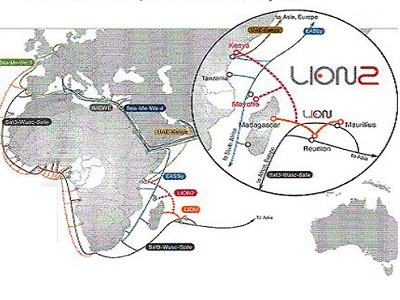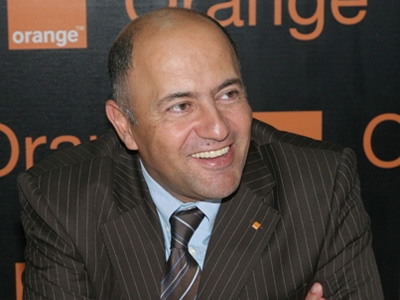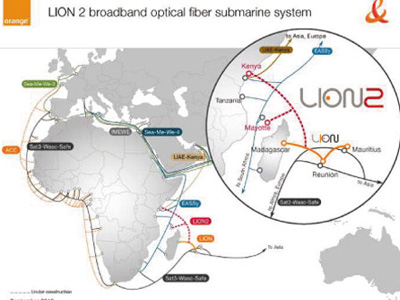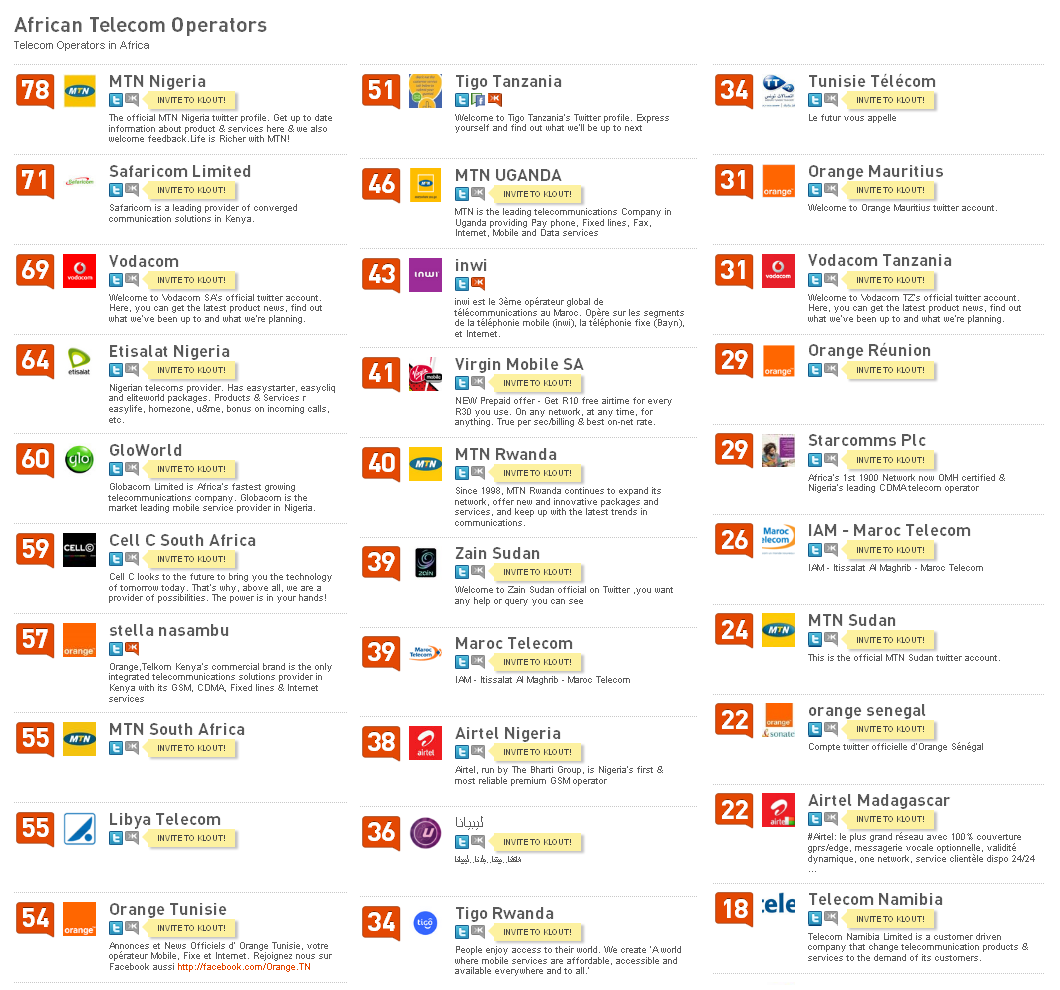Following the recent broadband cable cut that affected much of East Africa’s connectivity, the new Lower Indian Ocean Network (LION2) is set to go live and active on 14 April, 2012.

A map showing the location of the LION2 cable (image: subseaworldnews.com)
The landing station in Mombassa has been completed, and will enable the lead investor in the project, Orange Kenya, to begin leasing broadband Internet services to potential service providers, the company said.
The cable was built by France Telecom at a cost of KES 6.2 billion. Orange Kenya CEO Mickael Ghossein told Business Daily on Wednesday, adding that the LION2 cable “will provide a redundancy route to operators using the other three cables, the East African Marine System (TEAMS), Eastern Africa Submarine Cable System (EASSy) and Seacom.”
He added that the cable will be going live mid-next month, “and Orange is targeting operators currently connected to the other cables but looking for affordable redundancy routes to the Middle East.”
The cable covers some 3,000 kilometers to Nyali, Mombasa via the island of Mayotte located in the northern Mozambique channel from Mauritius.
Joseph Mayton






































